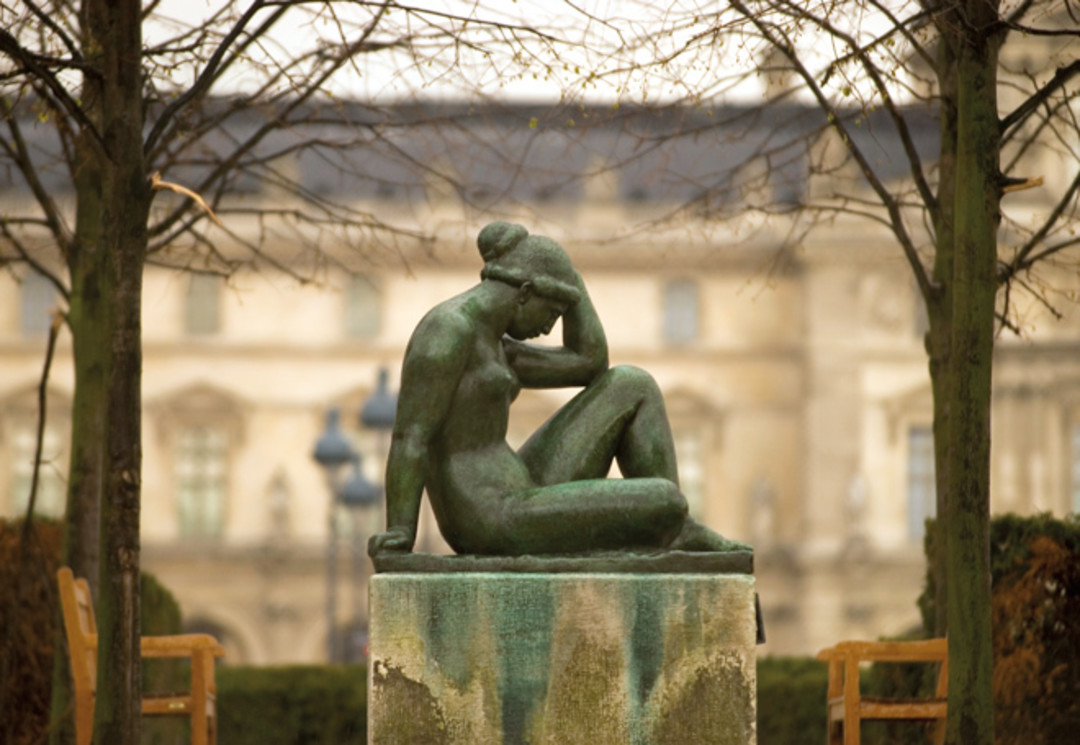The Art Museum Brings a Bit of Paris to Portland

Mediterranean or Latin Thought (1923–1927) by Aristide Maillol
Image: Courtesy Portland Art Museum
Portlanders take great pride in Forest Park. We stroll through Waterfront Park and the Park Blocks, find solace and inspiration in Washington Park and our many rose gardens. But none of our myriad green grounds compares to the sheer majesty of Paris’s Tuileries Garden. Stretching from the Louvre to the Place de la Concord, its symmetrical tree-lined paths and open-air museum serve as one of Europe’s defining public spaces, a site that has influenced artists, incited intellectuals, and inspired lovers for 350 years.
Now the Portland Art Museum is collaborating with the Louvre and two other US museums to bring the garden across the Atlantic with The Art of the Louvre’s Tuileries Garden. The exhibition includes 100 works, some of which have never before left Paris, ranging from baroque sculpture by Antoine Coysevox to impressionist paintings of the garden by Édouard Manet and Camille Pissarro to contemporary photography. But the exhibition seeks to transplant more than just the garden’s art—it hopes to evoke the space’s character, too. PAM’s gallery will house the larger sculptures, along plantings in the specific style of the Tuileries. Then the exhibition will spread over both floors of the museum’s special exhibition space with sketches, documents, photographs, and paintings of the garden; a day-in-the-life video; and, of course, some of the art housed in the Tuileries.
The Art of the Louvre’s Tuileries Garden
Portland Art Museum
June 14–Sept 21 “I was interested in how you create an exhibition around an important garden or space versus an important movement or artist,” said Portland Art Museum director Brian Ferriso. “As we go into exhibition creation for the 21st century, what are exhibitions? Really they’re about great stories and the ability to pull out important narratives from history.”
And certainly the Tuileries has a rich history. Commissioned in 1564 by Queen Catherine de’ Medici as a royal garden in the Renaissance tradition, it was transformed during the 17th century by the designer André Le Nôtre, who used it as a testing ground for the influential elements of perspective and geometry that he then applied to the Palace of Versailles. “It’s really a prototype of what we call le jardin à la française,” Henri Loyrette, who had a priceless view of the gardens from his apartment as the director of the Louvre from 2001 to 2013, said during a visit to Portland. “They would try new botanical solutions, but also the design of the garden: it was always a kind of laboratory.”
Its laboratory nature extended to social experimentation, as well. In 1667, it became one of the first royal gardens to open sections to those of nonroyal birth, transitioning over the next century from a private sanctuary for the likes of Louis XIV into a nexus for the common people that helped create the very notion of the “public.”
The exhibition will include a series of lectures and local park tours exploring the Tuileries and its connections with Portland’s own public spaces.




